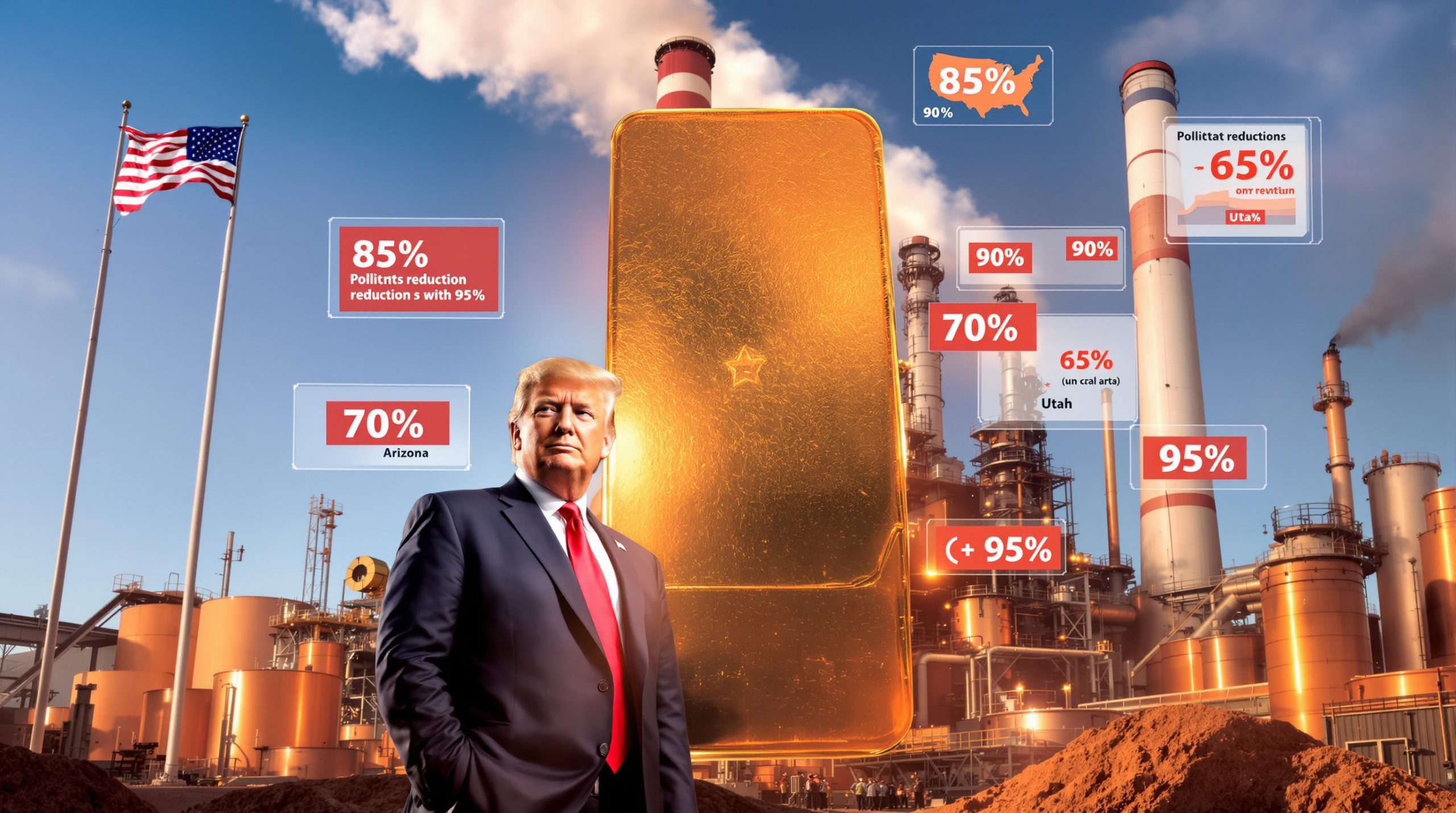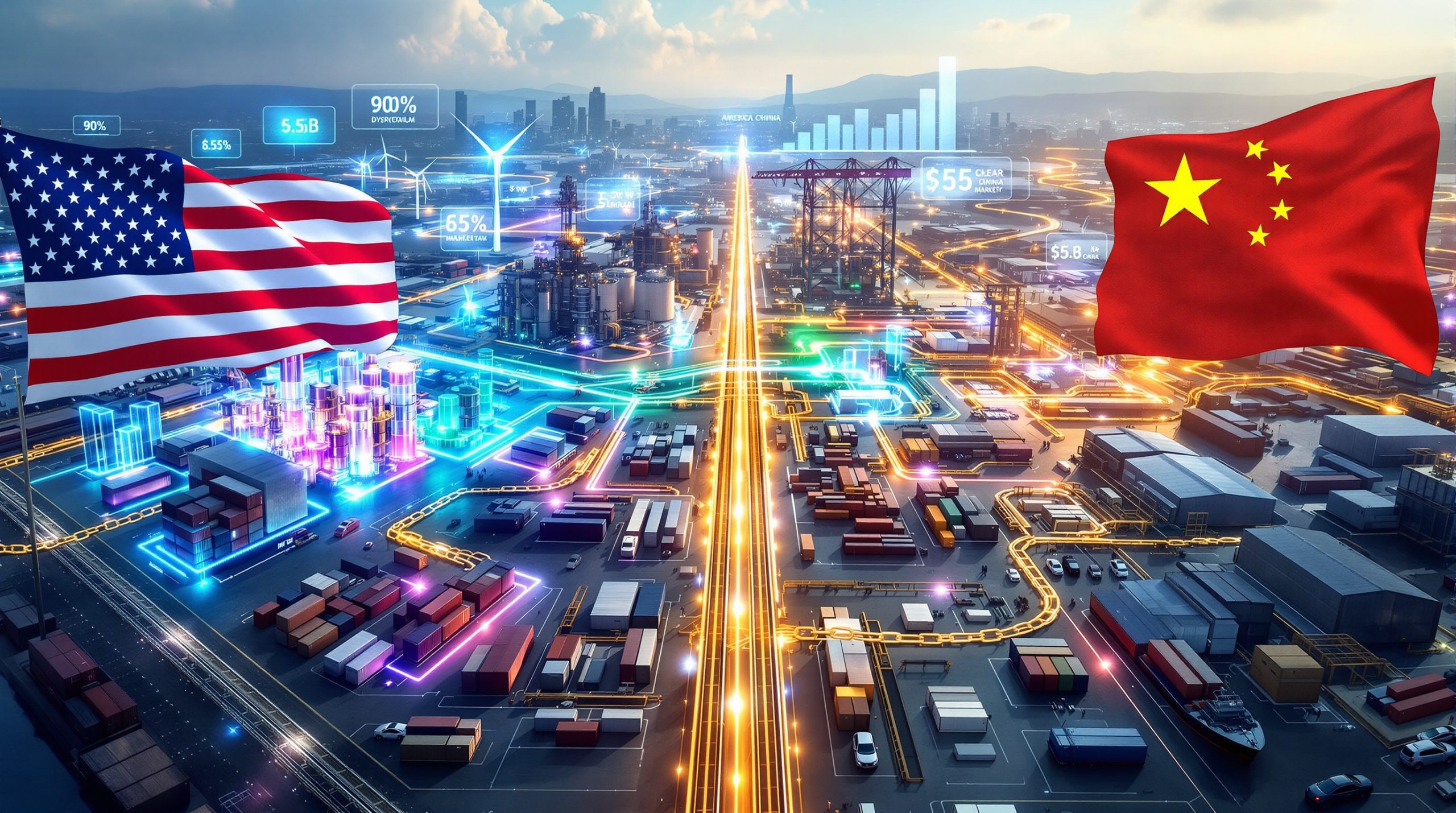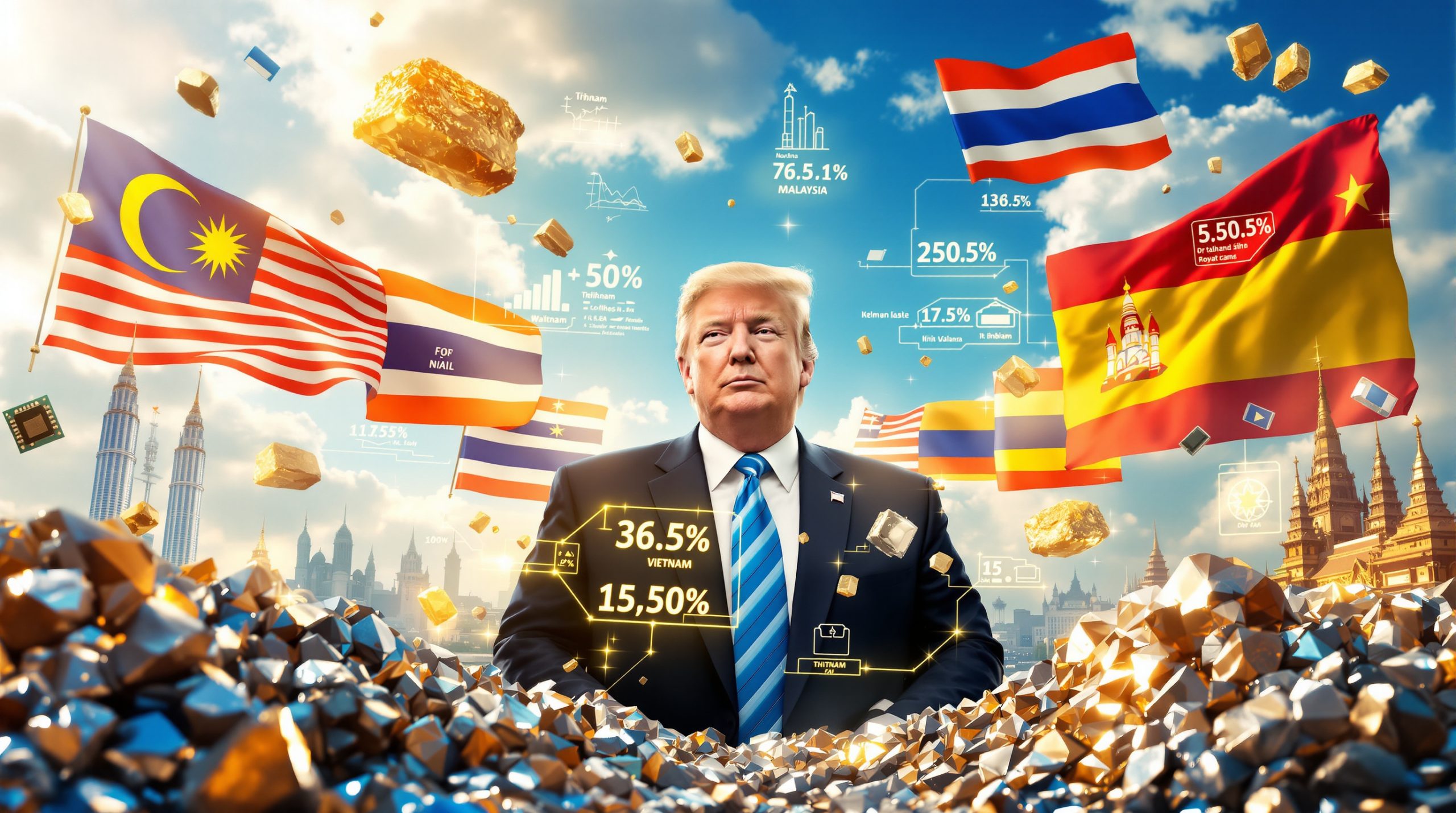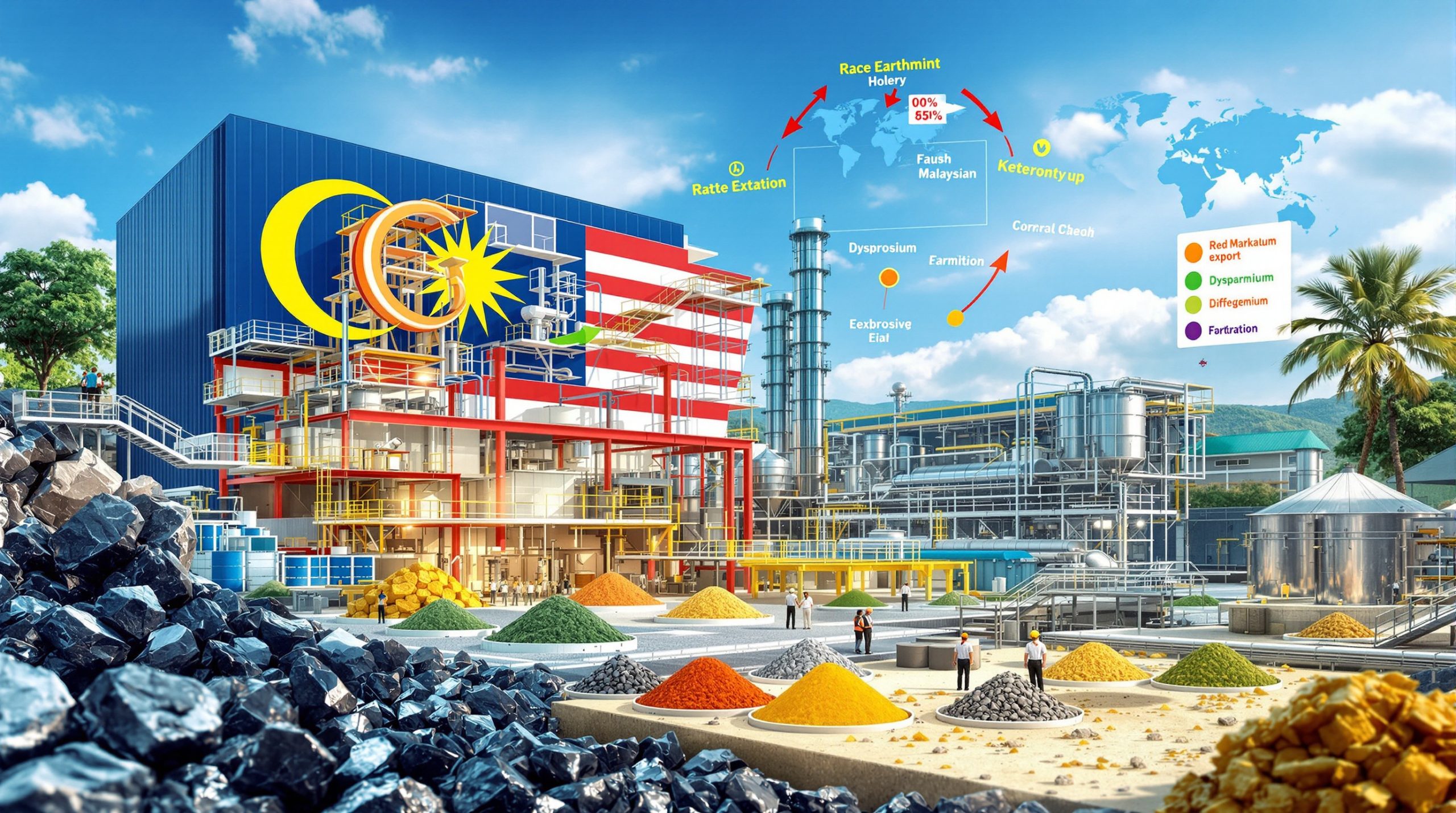What Are Rare Earth Metals and Why Are They Important?
Definition and Classification of Rare Earth Elements
Rare earth elements comprise 17 metallic minerals, including the 15 lanthanides plus scandium and yttrium. These are categorized into light rare earths (e.g., cerium, lanthanum) and heavy rare earths (e.g., dysprosium, terbium), with the latter being particularly crucial for high-tech applications. The current China's export restrictions impact specifically target six heavy rare earths: dysprosium, terbium, neodymium, praseodymium, europium, and yttrium. These elements exhibit unique magnetic and luminescent properties that make them irreplaceable in modern technologies.
Critical Applications in Modern Technology
Heavy rare earths form the backbone of permanent magnets used in electric vehicle (EV) motors, wind turbines, and precision-guided weapons. A single F-35 fighter jet requires 417 kg of rare earth materials, while each Tesla Model 3 electric motor contains about 4.5 kg of neodymium-based magnets. In renewable energy, offshore wind turbines use up to 2 tons of rare earth permanent magnets per megawatt of capacity. The global push for decarbonization has tripled rare earth demand for clean energy technologies since 2017.
China's Dominance in the Global Rare Earth Supply Chain
China's strategic consolidation of the rare earth sector began in the 1990s through state-backed consolidation of mining operations and substantial investment in processing infrastructure. Today, the country controls:
- 60% of global rare earth mining output
- 85% of rare earth processing capacity
- 92% of rare earth magnet production
This vertical integration gives China unprecedented pricing power, with rare earth export prices increasing 300% between 2020-2024. The concentration becomes particularly acute for heavy rare earths, where China refines 98% of global dysprosium and 99% of terbium supplies.
How Is China's Export Ban Impacting Global Markets?
Immediate Market Reactions and Price Volatility
The export restrictions triggered immediate market disruptions:
- Dysprosium prices surged from $450/kg to $680/kg within two weeks
- Neodymium oxide prices jumped 27% to $162/kg
- Terbium prices reached record highs of $2,400/kg
These increases compound existing inflationary pressures in tech manufacturing, with rare earths accounting for 12-15% of EV production costs. The London Metal Exchange reported a 15% increase in copper futures as manufacturers sought alternative materials, reaching $10,171 per ton.
Supply Chain Disruptions for Tech and Defense Industries
U.S. defense contractors face particular vulnerabilities:
- Lockheed Martin reported delays in F-35 component deliveries
- Raytheon Technologies revised missile production timelines
- General Dynamics Electric Boat warned of submarine construction bottlenecks
Civilian sectors face similar challenges, with Apple projecting a 3-month delay in iPhone 16 production and Tesla reducing Q3 2025 delivery estimates by 18%. Export license processing times have extended from 14 to 45 days, creating logistical bottlenecks at major ports like Los Angeles and Rotterdam.
Economic Implications for Global Technology Sectors
The Automotive Innovation Alliance estimates the china and rare earth metals export ban could add $1,200 to average EV prices by 2026. Consumer electronics may see price increases of 5-8% for smartphones and 10-15% for wind turbines. These cost pressures come as Western manufacturers already face competition from Chinese firms like BYD, which maintains preferential access to rare earth supplies.
Why Did China Implement This Export Ban?
Trade Tensions and Retaliatory Measures
The export restrictions directly respond to U.S. tariff increases on Chinese electronics and semiconductors, part of the broader Trump administration's trade strategy. This follows historical precedents:
- 2010: China restricted rare earth exports to Japan during a territorial dispute
- 2019: Threatened similar measures during U.S. trade negotiations
The current ban aligns with China's "dual circulation" strategy, prioritizing domestic technological self-sufficiency while leveraging resource control for geopolitical influence.
Strategic Objectives in Resource Control
China's National Development and Reform Commission explicitly linked the export controls to national security priorities, stating: "These materials constitute the industrial blood of our high-tech development and military modernization". The policy aims to:
- Protect domestic EV and renewable energy industries
- Force foreign manufacturers to relocate production to China
- Establish yuan-denominated pricing for critical minerals
Broader Context of US-China Economic Competition
The critical minerals race occurs alongside competing semiconductor initiatives:
- U.S. CHIPS Act: $52 billion for domestic chip production
- China's Big Fund III: $47 billion semiconductor investment
This technological decoupling is reshaping global trade patterns, with ASEAN nations seeing 40% increases in Chinese rare earth processing investments since 2023.
How Are Countries Responding to China's Rare Earth Dominance?
US Strategic Initiatives and Executive Actions
The Trump administration has implemented multiple countermeasures:
- Executive Order 13874: Authorizes deep-sea mining in international waters, bypassing UN Seabed Authority approvals
- Defense Production Act Title III: Allocates $1.2 billion for rare earth processing facilities
- Strategic Minerals Stockpile Expansion: Targets 45-day reserve of critical minerals by 2026
These policies directly support companies like The Metals Company, which plans to harvest polymetallic nodules containing 3.8 million tons of nickel and 1.3 million tons of cobalt from the Pacific Clarion-Clipperton Zone.
Development of Alternative Supply Sources
Diversification efforts include:
- Lynas Rare Earths: $500 million U.S. processing facility in Texas
- Greenland Mining: Developing the Kvanefjeld project with 11 million tons of rare earth oxides
- Urban Mining Initiatives: Apple's robot "Daisy" recovers 1 ton of rare earths per 100,000 iPhones recycled
Investment in Substitute Technologies and Materials
Technological innovations aim to reduce rare earth dependence:
- Arbor Battery Innovations: 3D electrode technology enables 10-minute EV charging without heavy rare earths
- Niron Magnetics: Iron-nitride permanent magnets with zero rare earth content
- ReElement Technologies: Chromatography-based recycling recovers 98% of rare earths from batteries
What Does This Mean for the Future of Global Technology Supply Chains?
Short-Term Adaptation Strategies for Manufacturers
Industry responses focus on resilience:
- Dual Sourcing: Toyota secured rare earths from Vietnam and Australia
- Material Reduction: GM's Ultium batteries use 70% less dysprosium
- Inventory Buffering: Siemens Energy built 6-month rare earth stockpiles
Long-Term Reshaping of Global Resource Politics
Emerging supply chain configurations include:
- U.S.-Australia-India Mineral Pact: Shared processing infrastructure
- EU Critical Raw Materials Act: Mandating 15% domestic recycling by 2030
- African Continental Free Trade Area: Developing continental rare earth standards
Investment Opportunities in the Changing Landscape
Sector growth areas include:
- Deep-Sea Mining: Projected $15 billion market by 2030
- Recycling Technologies: 30% CAGR forecast through 2035
- Alternative Materials: $8.4 billion magnet substitution market by 2027
How Are Technological Innovations Addressing Rare Earth Challenges?
Breakthroughs in Battery Technology
Arbor Battery Innovations' 3D electrode platform exemplifies disruptive innovation:
- Enables 10-minute charging cycles across temperatures (-20°C to 60°C)
- Compatible with existing lithium-ion production lines
- Reduces cobalt usage by 40% and eliminates terbium/dysprosium requirements
Advances in Sustainable Mining and Processing
Novel extraction methods aim to reduce environmental impact:
- Bioleaching: Using bacteria to extract rare earths with 50% less acid waste
- Electrodeposition: Selective recovery of heavy rare earths from mine tailings
- Plasma Processing: 90% energy reduction compared to traditional methods
Material Science Developments Reducing Rare Earth Dependence
Promising alternatives include:
- MnAlC Magnets: 80% of neodymium magnet strength at 50% cost
- Graphene-Composite Motors: Eliminate rare earths in EV drivetrains
- High-Temperature Superconductors: Enable compact fusion reactors without rare earth coils
The china and rare earth metals export ban has accelerated investment in mining technology innovations and alternative processing methods. Furthermore, countries with significant global rare earth reserves outside China are now seeing unprecedented investment as global powers seek to secure supply chains. According to analysis from CSIS, these restrictions are fundamentally reshaping commodity markets and global trade patterns for decades to come.
FAQ: China's Rare Earth Export Ban
What specific rare earth elements are affected by China's export ban?
The ban specifically targets six heavy rare earth elements that are crucial for high-tech applications: dysprosium, terbium, neodymium, praseodymium, europium, and yttrium. These elements are essential for creating powerful permanent magnets used in electric vehicles, wind turbines, and defense technologies. China currently controls over 95% of global processing capacity for these specific elements, making the ban particularly impactful.
How will this ban affect consumer electronics prices?
Consumer electronics manufacturers face significant cost pressures due to the export restrictions. Smartphone prices are projected to increase by 5-8% by early 2025, while laptop computers containing rare earth-based hard drives could see price hikes of 3-10%. Gaming consoles with rare earth magnets in speakers and controllers may experience 7-12% price increases. These rising costs will likely be passed on to consumers, with premium electronic devices experiencing the most significant price adjustments.
What are the national security implications of rare earth restrictions?
The restrictions create severe vulnerabilities in Western defense supply chains. Modern military systems like precision-guided munitions, radar systems, night vision equipment, and satellite communications all depend on rare earth components. The Pentagon has identified at least 280 different weapons systems that require rare earth elements. Military stockpiles currently cover only 30-60 days of critical supply needs, heightening concerns about readiness during potential conflicts. Defense departments are rapidly developing contingency plans that include stockpiling and developing synthetic alternatives.
How long could supply disruptions last?
Supply disruptions could persist for 3-5 years as alternative sources develop. Most industry analysts project that global rare earth markets will begin rebalancing by 2028, assuming current investments in alternative mining and processing facilities remain on schedule. However, full supply chain reconfiguration could take a decade or more. The timeline for resolution depends largely on technological developments in recycling and substitution, as well as the success of deep-sea mining initiatives like those supported by The Metals Company in the Pacific.
Want to Invest in the Next Major Rare Earth Discovery?
Stay ahead of the curve with Discovery Alert's proprietary Discovery IQ model, which delivers real-time alerts on significant ASX mineral discoveries, including rare earth elements that are critical to global technology supply chains. Understand why major mineral discoveries can lead to exceptional returns by exploring Discovery Alert's dedicated discoveries page and begin your 30-day free trial today.




